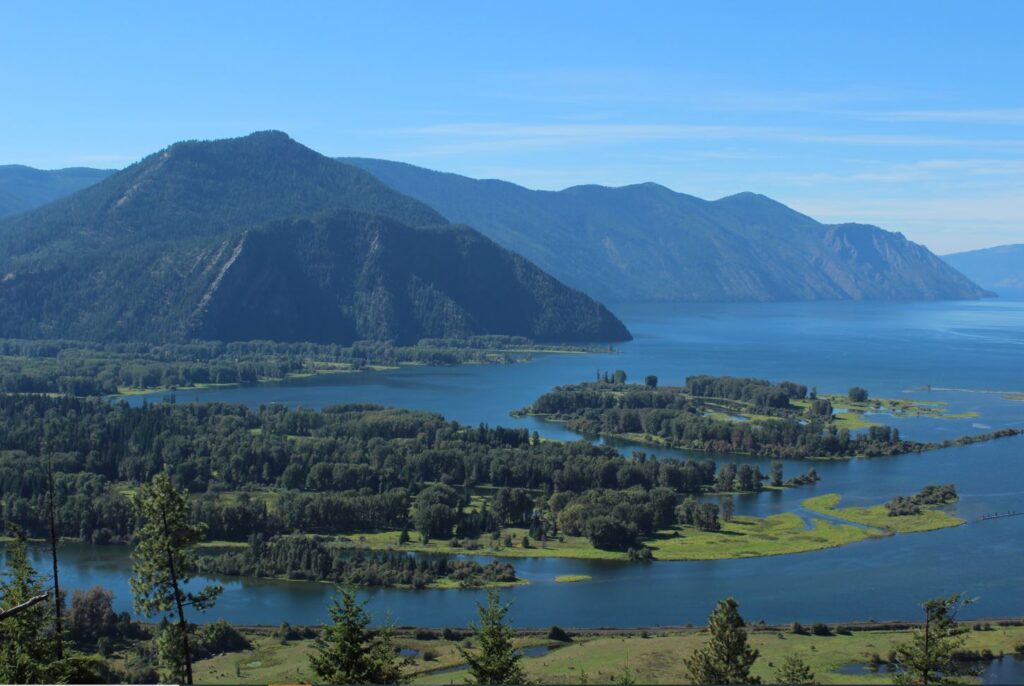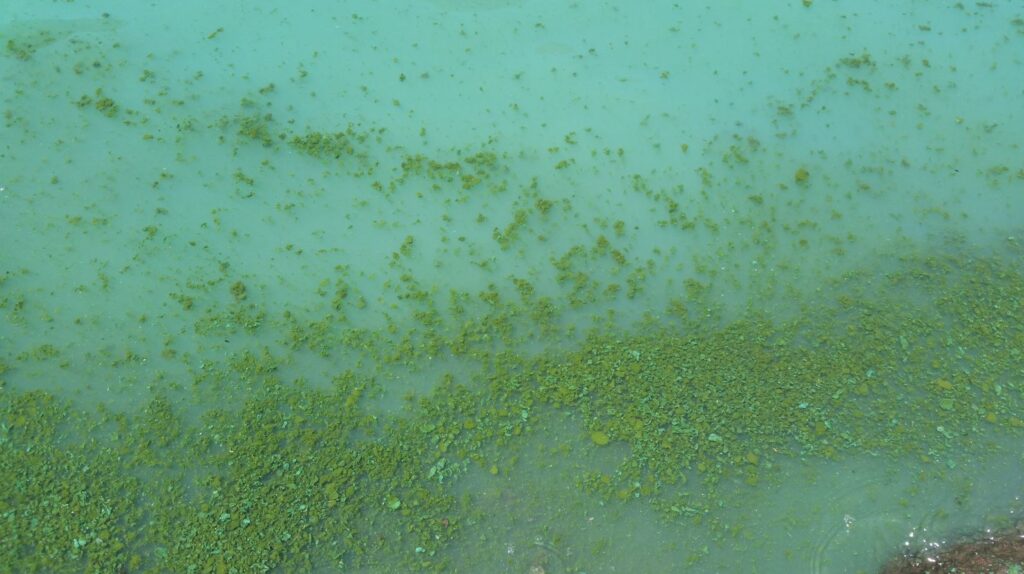Unchecked development in Bonner County threatens waterways and quality of life
With our spectacular vistas, fresh air, and ample, refreshing lakes and rivers, one can’t blame the droves of people seeking refuge in Bonner County. Idaho’s Panhandle has long called out to vacationers from nearby cities who come to recreate and rejuvenate in this year-round wonderland. Whether coming to ski and ride Schweitzer Mountain, or frolic in the waters of Pend Oreille or Priest Lake, the crowds would ebb and flow with the change of seasons. Now, people seem to be drawn from farther away and are making more long term investments; building homes and larger developments across the hills, valleys, and shorelines.  According to Project 7B, a community organization dedicated to educating and engaging the public in local land use and planning issues, 4,656 new land parcels were created in Bonner County from 2016 through 2021. This extensive land division sets the stage for denser development, and if we don’t plan and prepare properly, it will put undue pressure on our waterways and diminish our quality of life. That’s where our County government comes into play. It’s the job of our Bonner County government to set rules that might reduce the growing pains this level of new development can bring. But in 2016, Bonner County officials changed some of those rules, making it easier for developers to create smaller parcels and build subdivisions without community input and without design standards. A requirement that sewage disposal plans be approved by the Department of Environmental Quality or Panhandle Health District prior to building was also revoked. And unfortunately, these new streamlined development processes are certainly being put to use…A 30-lot subdivision in the Coolin wetland on the south shore of Priest Lake was rubber stamped by Bonner County through a shady process that skirted subdivision approval rules and lacked prior approval for sewer district hookups. The Woods on Priest Lake subdivision was approved for 19 homes, even though the local sewer district could only guarantee hookups for 14 of them. And a new community sewer system at the hotly contested Camp Bay development was approved near the shores of Lake Pend Oreille, despite concerns being raised by Panhandle Health District that it may not be an appropriate location due to surface water on the site.The Whiskey Jack community, nestled on a lovely piece of land where Boyer Slough meets Lake Pend Oreille, has 28 new lots approved to develop, even though the Kootenai Ponderay Sewer District (KPSD), which would need to accept the additional waste, has not been able to comply with their permitted pollution limits for years. Despite the fact they are currently operating beyond their capacity, KPSD continues to offer hookups to new homes and businesses.So, why does this all matter? When it comes to protecting our lakes, rivers, drinking water sources, and swimming holes, it matters quite a lot. Development can pollute our waterways not only by adding nutrients through insufficiently treated sewage, but also by releasing sediment during the building process and allowing fertilizer and herbicides to run off from lawns. The cumulative pollution load, coupled with increasingly hot summers, can create perfect conditions for toxic algae to grow.
According to Project 7B, a community organization dedicated to educating and engaging the public in local land use and planning issues, 4,656 new land parcels were created in Bonner County from 2016 through 2021. This extensive land division sets the stage for denser development, and if we don’t plan and prepare properly, it will put undue pressure on our waterways and diminish our quality of life. That’s where our County government comes into play. It’s the job of our Bonner County government to set rules that might reduce the growing pains this level of new development can bring. But in 2016, Bonner County officials changed some of those rules, making it easier for developers to create smaller parcels and build subdivisions without community input and without design standards. A requirement that sewage disposal plans be approved by the Department of Environmental Quality or Panhandle Health District prior to building was also revoked. And unfortunately, these new streamlined development processes are certainly being put to use…A 30-lot subdivision in the Coolin wetland on the south shore of Priest Lake was rubber stamped by Bonner County through a shady process that skirted subdivision approval rules and lacked prior approval for sewer district hookups. The Woods on Priest Lake subdivision was approved for 19 homes, even though the local sewer district could only guarantee hookups for 14 of them. And a new community sewer system at the hotly contested Camp Bay development was approved near the shores of Lake Pend Oreille, despite concerns being raised by Panhandle Health District that it may not be an appropriate location due to surface water on the site.The Whiskey Jack community, nestled on a lovely piece of land where Boyer Slough meets Lake Pend Oreille, has 28 new lots approved to develop, even though the Kootenai Ponderay Sewer District (KPSD), which would need to accept the additional waste, has not been able to comply with their permitted pollution limits for years. Despite the fact they are currently operating beyond their capacity, KPSD continues to offer hookups to new homes and businesses.So, why does this all matter? When it comes to protecting our lakes, rivers, drinking water sources, and swimming holes, it matters quite a lot. Development can pollute our waterways not only by adding nutrients through insufficiently treated sewage, but also by releasing sediment during the building process and allowing fertilizer and herbicides to run off from lawns. The cumulative pollution load, coupled with increasingly hot summers, can create perfect conditions for toxic algae to grow.  The last couple of years have brought a spike in toxic algae blooms in many of Bonner County’s lakes, including the crown jewels Lake Pend Oreille and Priest Lake. Since toxic algae can be deadly, when it blooms people no longer get to enjoy a refreshing swim on a hot afternoon, or paddle-boarding with friends, or throwing sticks in the water for our favorite dogs. Boyer Slough, the receiving water of the Kootenai Ponderay Sewer District discharge, was off limits due to toxic algae last summer…It’s time to rethink this wanton principle of development at any cost. Fortunately, hope is in the air. Our Planning Commission will soon take up the task of updating our full Comprehensive Plan, and we will work to ensure they meaningfully engage the public and incorporate our long-term needs into the new plan. Also, a new majority on the Bonner County Commission will take effect in 2023, and we will be working to ensure they do their job and protect our waterways and quality of life.
The last couple of years have brought a spike in toxic algae blooms in many of Bonner County’s lakes, including the crown jewels Lake Pend Oreille and Priest Lake. Since toxic algae can be deadly, when it blooms people no longer get to enjoy a refreshing swim on a hot afternoon, or paddle-boarding with friends, or throwing sticks in the water for our favorite dogs. Boyer Slough, the receiving water of the Kootenai Ponderay Sewer District discharge, was off limits due to toxic algae last summer…It’s time to rethink this wanton principle of development at any cost. Fortunately, hope is in the air. Our Planning Commission will soon take up the task of updating our full Comprehensive Plan, and we will work to ensure they meaningfully engage the public and incorporate our long-term needs into the new plan. Also, a new majority on the Bonner County Commission will take effect in 2023, and we will be working to ensure they do their job and protect our waterways and quality of life.
While growth is perhaps inevitable, the growing pains are not. Stay tuned to learn about ways that you can get involved and help ensure we grow responsibly in Bonner County.

